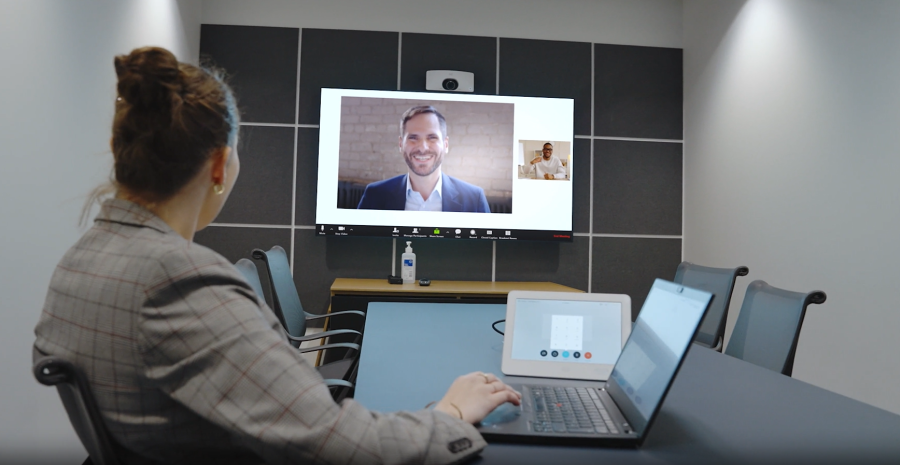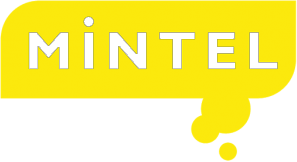Round the World in Many Ways: How Mimecast Secured a Successful Global Messaging Rollout with Data
The challenge
Mimecast released new messaging around their core pillars and needed a way to stay consistent across their global locations and ensure their reps across the enterprise used the new branding in all customer-facing content.
The outcome
With Gong, Mimecast was able to ensure they told a consistent Mimecast story in each of their global regions. That has made for a better messaging strategy and has helped the team collaborate more effectively.

headquarters
Broadgate, London
founded
2003
company size
+2,200
industry
Computer and Network Security
Every region of the globe has a unique flavor and distinct feel. For a traveler, the fun is in seeing and experiencing what makes each region special. For a global, enterprise company, working in different regions has the benefit of bringing together multiple perspectives. It also requires leaders to think differently. You can’t do business quite the same way in every location, and you must work especially hard to ensure that everyone remains aligned with your company goals. Sometimes, using consistent messaging in various locations doesn’t work as well as you’d hope.
That’s why at Mimecast, we incorporated cultural strengths into our latest strategic initiative: a launch of a new branding and messaging, all while boosting enablement and discovering what good looks like for sales reps.
Mimecast is an enterprise-level cyber security company focused on stopping bad things from happening to good organizations by enabling them to work protected. From our offices across the globe, in North America, Europe, Africa, and Asia-Pacific, we work with technical sales cycles in all segments of SMB, commercial, and enterprise. We deal with customers in a wide range of industries, from mom-and-pop retail shops to large banks and tech companies.
Sales enablement at Mimecast consists of a small but mighty team spread across the globe, who use technology as a force multiplier. As a Technology Enablement Architect at Mimecast, my role is to empower our go-to-market sellers to use and get the most out of our fully integrated tech stack — and it’s a pretty beefy tech stack. What I really love about my job is working one-on-one with reps to understand how tech like the Gong Revenue Intelligence Platform can improve their daily workflow.
In 2021, the enablement team added Gong to our tech stack, and it proved to be a critical part of our branding, messaging, and enablement strategy.
Turn to data to ensure consistency in large, global, strategic initiatives
In August of 2022, the company released new messaging around our core pillars of protecting communications, people, and data.
We ensure that businesses feel confident that their communications are secure, their data is safe and integrated, and that their people are well-trained in cyber security awareness. Everyone should feel confident in doing their job with a workflow that feels natural to them without having to worry about cybersecurity. This was the meaning behind our new messaging, “work protected.”
It was extremely important that we were consistent in our messaging across our global locations, and that reps across the enterprise used the new branding in all customer-facing content. Gong was a big part of the project, and helped ensure that we told a consistent Mimecast story in each of our global regions.
We first rolled out Gong in North America, and given our success using the platform, expanded its use from there. With Gong’s trackers and filters, we could easily surface and highlight examples of when the new messaging was used effectively — identifying for our teams what good looks like. We were also able to flag when old messaging or content was used, and coach or correct accordingly.
Messaging can’t be cookie-cutter for all regions and roles in a global, enterprise-level company. You must combine tech with cultural expertise for maximum effectiveness.
Gong also helped us realize that messaging can’t be cookie-cutter for all regions and roles. The message may be the same, but the delivery can be different in each region. Reps in some regions are direct and all business, while reps in other regions abide by a more conversational and casual cultural norm. Gong showed us we could allow for these cultural differences without losing our core message or its effectiveness.
Make well-informed pivots… even in the midst of a messaging rollout
Gong’s visibility into customer and rep interactions played an important part in training during this rollout. We used to engage in scenario-based training and role playing, but the scenarios weren’t always realistic. Who a person is in training is not necessarily how they pitch on a call. You don’t know the truth until a rep is engaged in a direct conversation with a customer and you have insight into that conversation.
For our new approach to messaging training, reps submit a call or a snippet (a portion of a call easily shared on the Gong platform) where they spoke to a customer using the new messaging. This way, we not only adapt our training to the real-life voice of the customer, but we also tweaked our enablement style to the natural pitch and positioning of our reps in different regions. That was a significant change for Mimecast.
Another big benefit we saw using Gong during the messaging rollout was the ability to test our hypotheses on the fly. We designed marketing material based on our new messaging that included pitch decks, which have a slide meant to help with discovery by walking the prospect through our solution portfolio. It was designed to create a two-way conversation and encourage asking the customer discovery questions to learn more about their current state. But we discovered some reps pulled up that slide and “opened up the back of the truck,” as my team calls it. They essentially said, “Look at all our fancy products and services.” Our reps were telling prospects “all about us,” when the slide was intended to open up a conversation about customers’ needs. Alongside this discovery, Gong’s AI insights surfaced a dip in some of our pipeline and deals.
We uncovered this hard truth about the deck using Gong’s slide filter, which allows you to search for slide text used in a call. Gong provides search filters like no other product on the market. In addition to the slide text, I set the duration for the slide’s use on the call to 5 to 30+ minutes, believing that a rep using that slide for over five minutes would likely indicate “speaking at” the customer. In the interaction search I set the longest monologue to 3 to 20+ minutes to identify long rants, and the talk ratio to 30% to 100% to target one-sided conversations. This search gave me a strong sample size I could use to highlight to sales leaders that we needed to tweak our enablement and coaching on this slide to better support our reps.
With Gong our enablement team also identified trends in successful seller behaviors which the team could relay across to the field. An insight we found revealed that high-performing sellers were speaking less during customer calls, and they were allowing the customer to expand more on their pain points and needs. We began to interview sellers while also setting up call alerts to listen to and learn more about their success to understand and translate the effective actions of the sellers into behaviors for enablement to focus on. These calls and interviews revealed that high-performing sellers used custom talk-tracks that depended on robust questioning and active listening. Simply put, high-performing sellers were asking more questions of the customer, which helped lead the customer to share more and provide self-discovery. Gong allowed us to identify this and helped us focus on how to best equip sellers to actively listen and ask more purposeful discovery questions to guide the customer to share more information on a call.
From here we began to use other filters to identify interactions that align with Gong’s best practices, to give reps a Call Library to review and learn from. This has helped managers share calls to support coaching initiatives while also simplifying the feedback process. Gong allows us to be more effective because we can test a hypothesis against the data, learn from it, and switch our approach.
In another example, we looked at how reps applied the new messaging by region, and found that certain regions with less enablement support weren’t as aligned with the rollout as we wanted. This discovery led us to identify that we needed closer alignment with regional enablement, which helped us take a more structured approach to enablement across the globe. Today, our go-to-market messaging is much more closely aligned globally.
Our rollout across nine countries was a success. So much so, in fact, that we received a Golden Gong award to recognize our work.
Use insights into customer interactions to build efficiency, collaboration, and support across the company
Before adopting Gong, Mimecast didn’t have a great process for learning about the voice of the customer. Part of our initial push towards the Gong platform was to give the company better insight into customer interactions. We wanted to know what works in the field — what’s real and what’s not — without reps dealing with the psychological burden of managers sitting in on their calls. Gong’s AI digests data from our customer interactions and presents it in dashboards (“Deal Board,” “Initiatives” board, etc.) in a way that’s easy to understand and act on. In one month Gong gave us the amount of data that other solutions gave us in six.
That data analysis is a big part of how Gong has helped the enablement team become more efficient, especially when it comes to working across time zones. Before Gong, I would very often be online late at night or early in the morning, and I’m not a morning person. You can’t expect everyone to be 100% during their off hours — I know I’m not at my peak alertness then. It’s also unfair to the other person, who doesn’t receive the same attention they would if working with someone in their own time zone. With that being said, as we rolled out our new messaging, we needed a good understanding of what was happening across different roles and regions. Setting up alerts based on a person’s role or time zone allowed us to keep track of deviations from our messaging, then follow up to get a better understanding of why someone might have tweaked the messaging. This helped us learn regionally what worked and what didn’t.
Data that helps people work together on the front lines also moves up the chain of command to provide more accurate forecasts.
We’ve also seen how Gong provides real-time visibility into risk through Gong Deal Boards and call alerts. The warning column in the Deal Boards shows key deal elements that haven’t been discussed, such as pricing, or an absence of senior executives from involvement in the deal. Gong also allows our managers to set up call alerts based on the warning triggers that concern them. In the past, managers might ask about a deal in their one-on-one with a rep, but that could be a week after the initial interaction. These call alerts enable stronger collaboration, because it allows us to support reps and address risks before it’s too late. Meanwhile, other teams can set up trigger alerts for keywords. When the words “new feature” are mentioned, for example, Gong alerts our product marketing team with the direct feedback from the customer. The data that helps people work together on the front lines also moves up the chain of command to help us provide more accurate forecasts. We couldn’t do it without Gong’s AI-backed analysis.
Leverage tech to spot and respond to market trends faster and more successfully
We still consider ourselves in the early phase of our Gong implementation, but what Gong has allowed us to do is identify and adapt to new trends. Like a lot of enterprise-sized, global companies, we had a drop in our new business pipeline in the early days of the pandemic. With Gong, we could analyze what had changed in our messaging and, more importantly, dive into the messaging of reps who were still having successes. We share calls within Gong, so when someone has a successful call, they share it leadership and the enablement team to review. In that way, Gong helps us learn from our frontlines more effectively, which leads to greater pipeline success.
Learning more efficiently from our frontline workers leads to greater pipeline success.
When certain products are mentioned less frequently, we can form a hypothesis as to why, and offer awareness or reinforcement training. We can also identify trends at the global level to ensure adequate support and enablement.
Companies can learn a lot from incorporating different points of view. With Gong, we now have the ability to test our hypotheses by bringing in multiple perspectives, not just regionally, but globally, across multiple teams. That has made for a better messaging strategy, and has helped us collaborate more effectively.
Have questions or want a custom demo?
We’re here to help! Click the button below and we’ll be in touch.
Request demo



